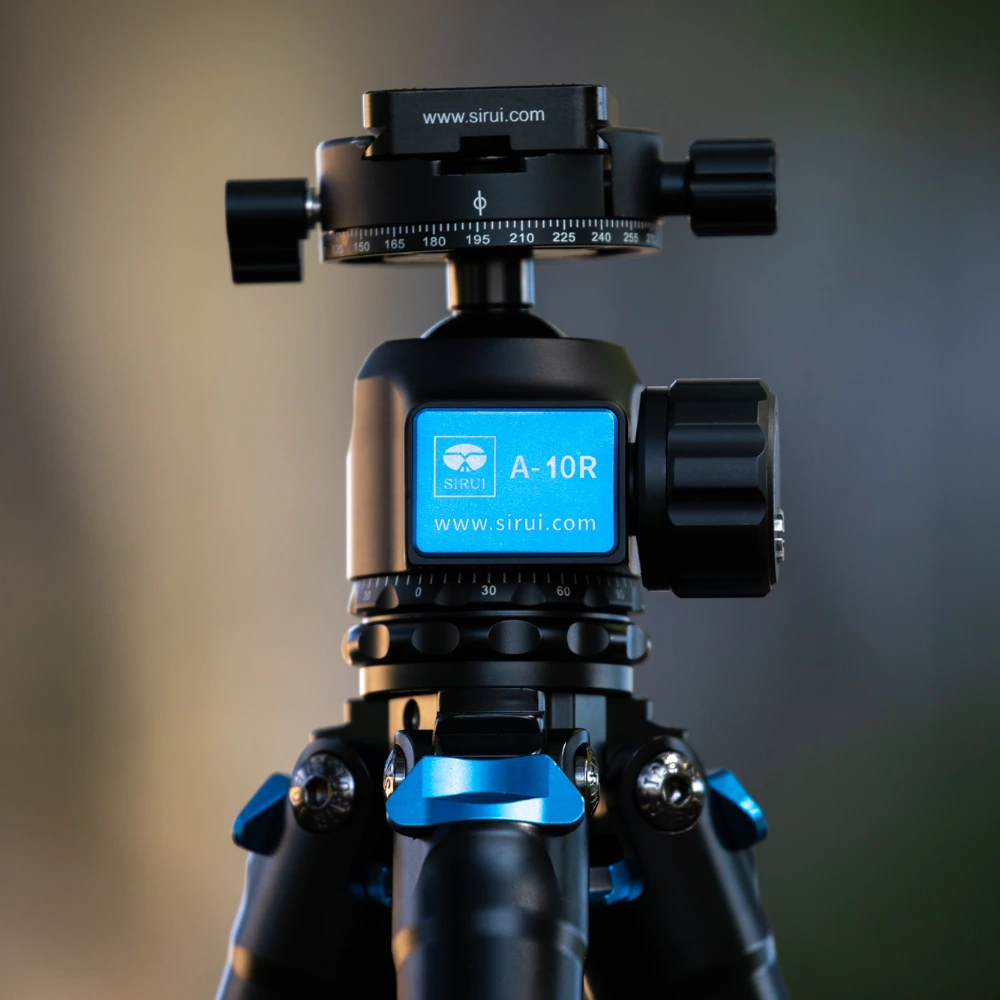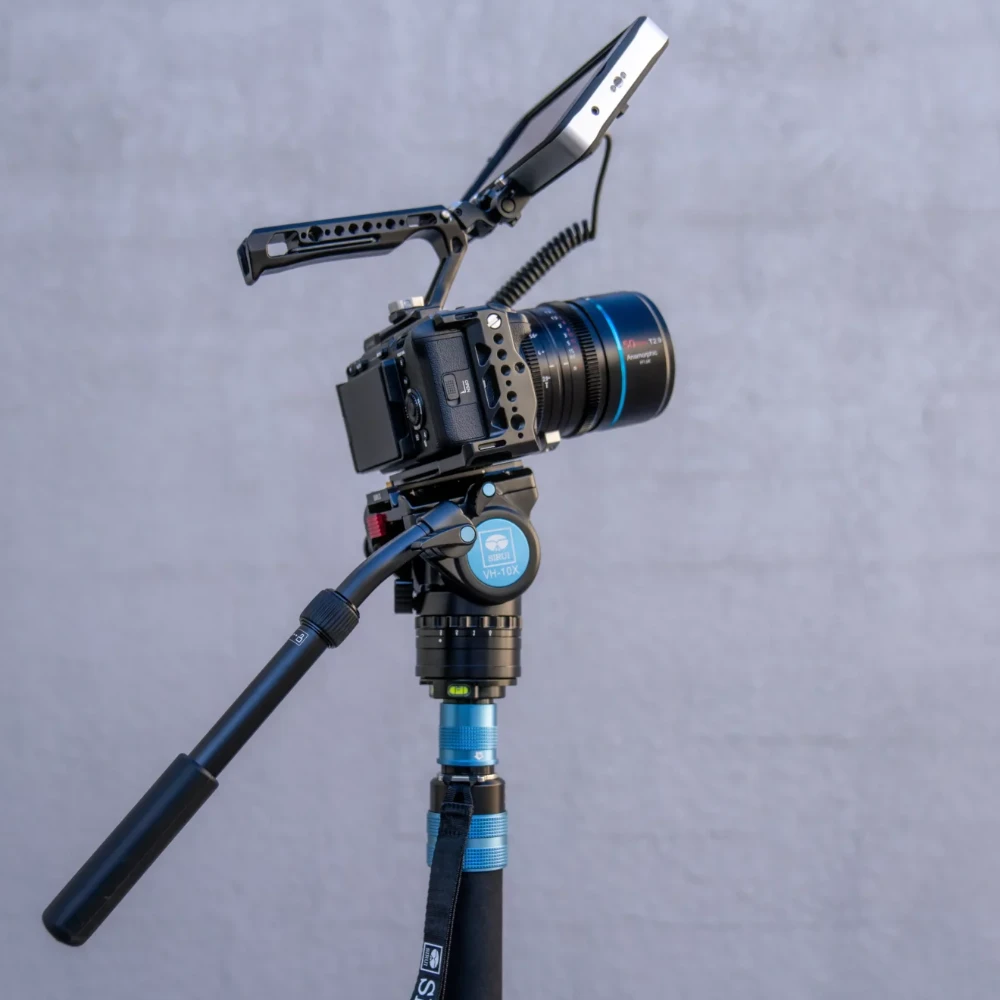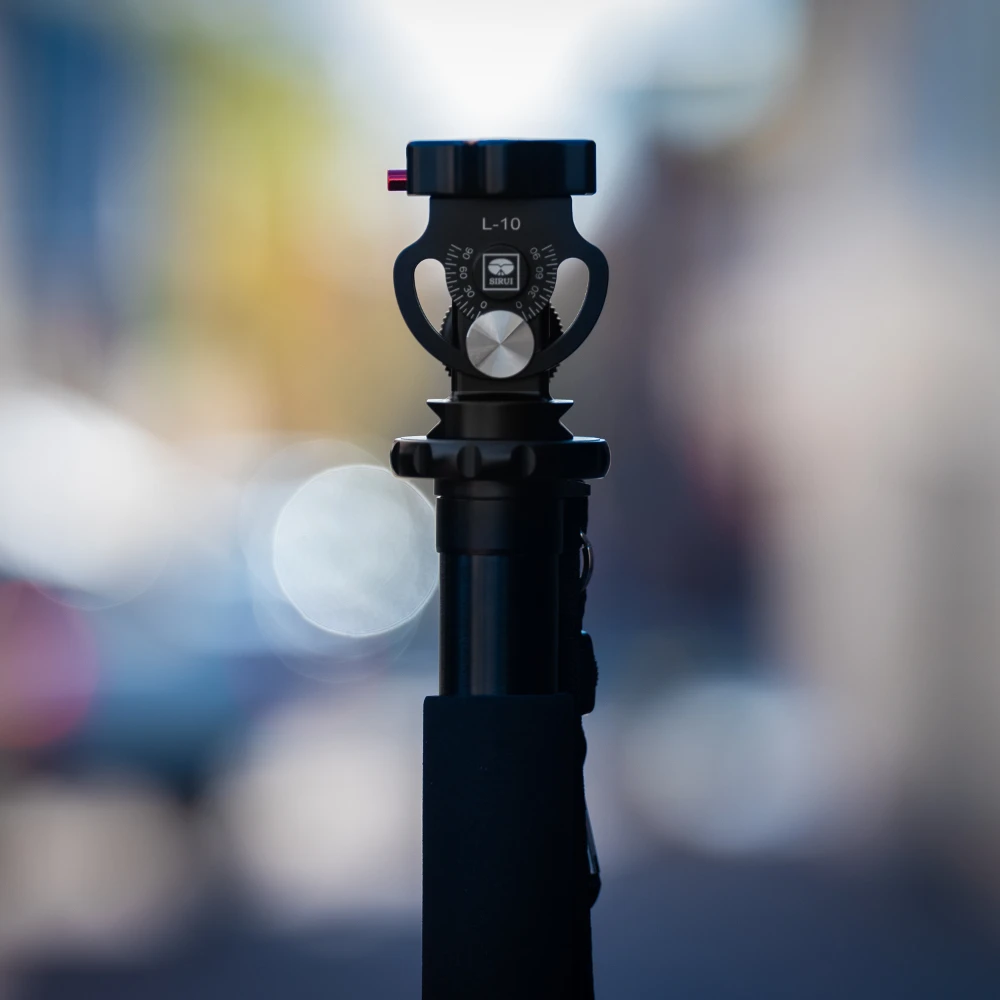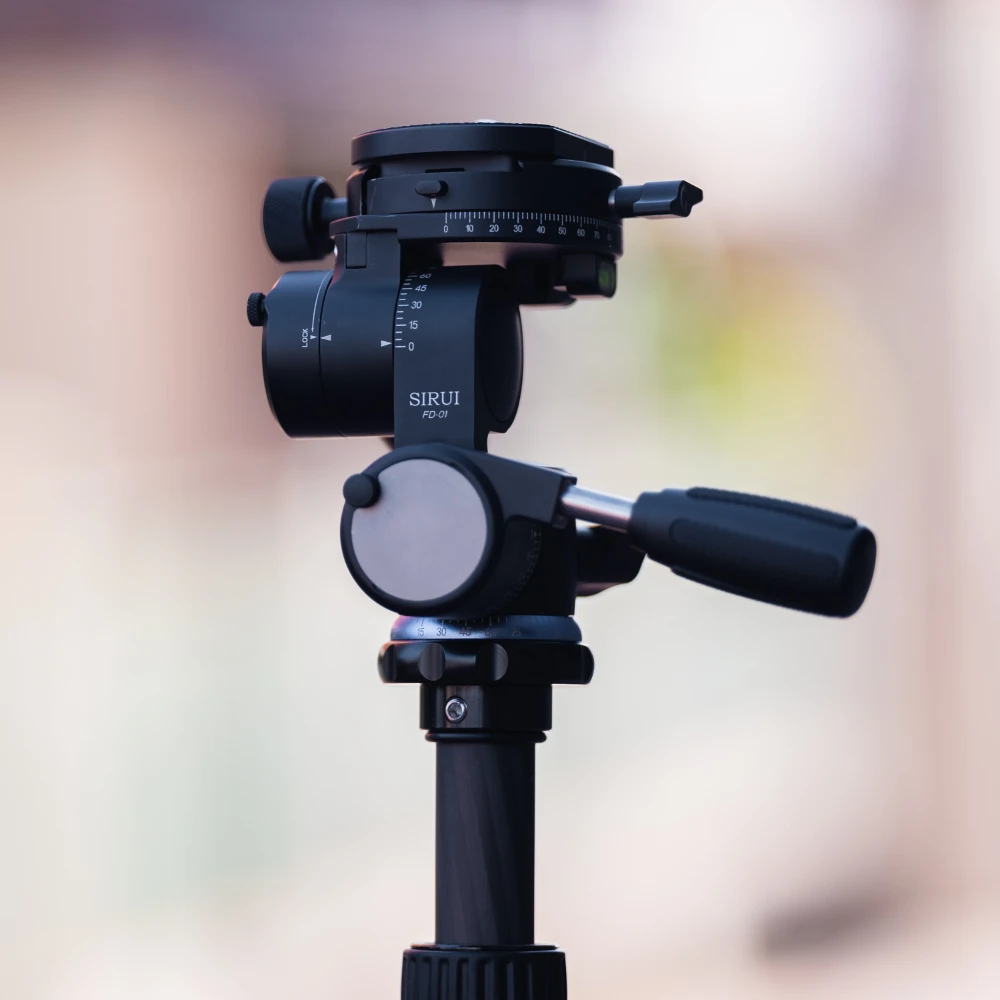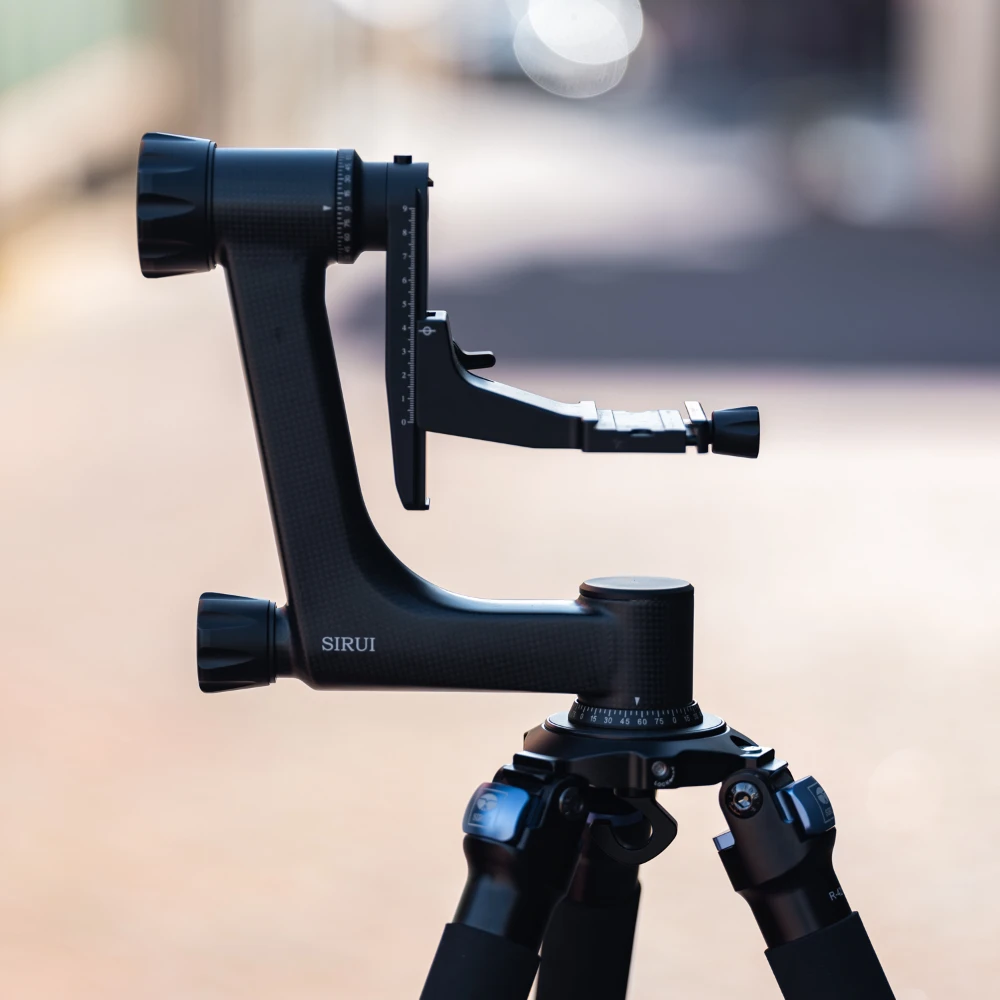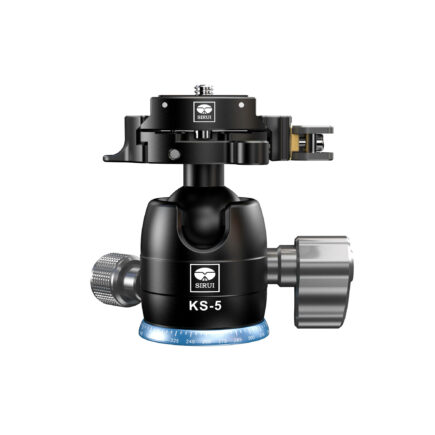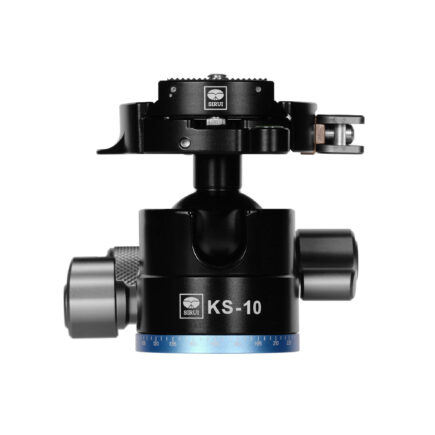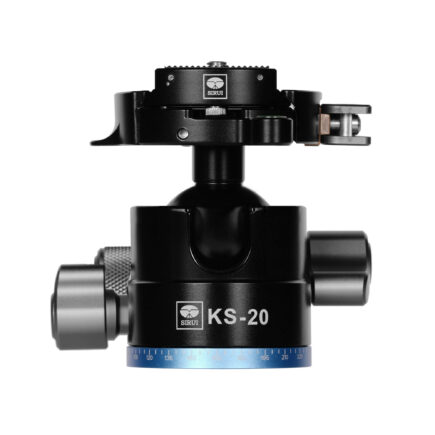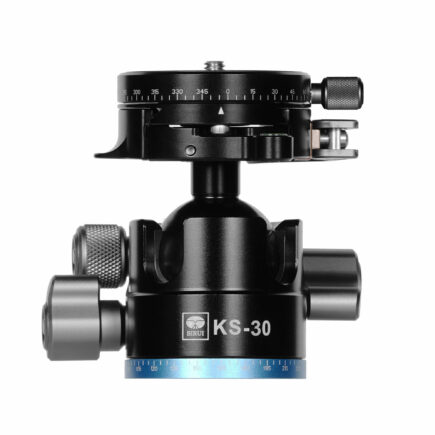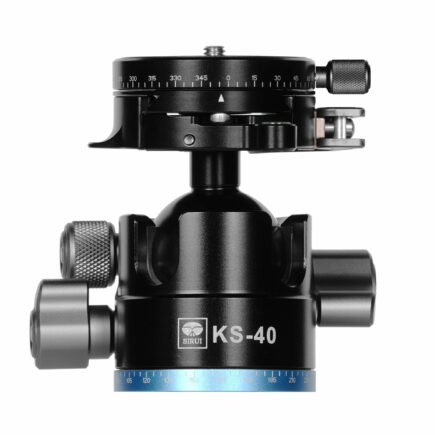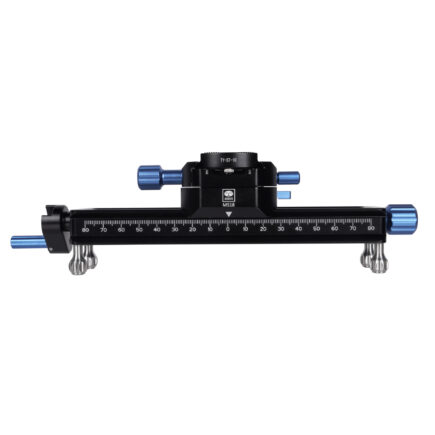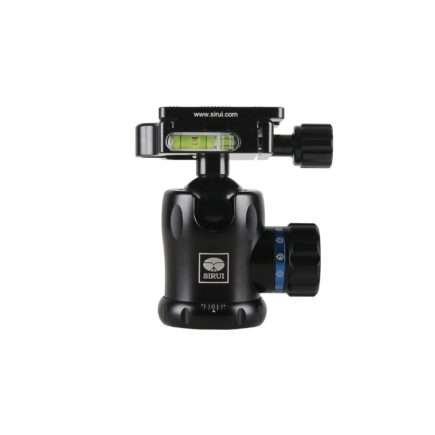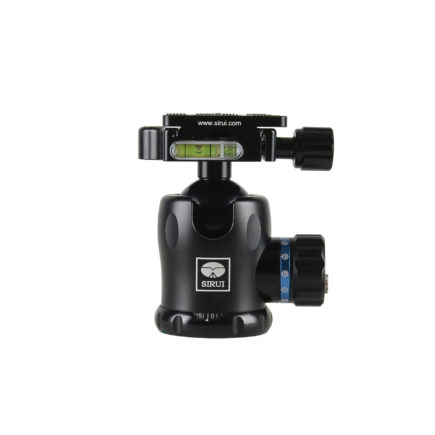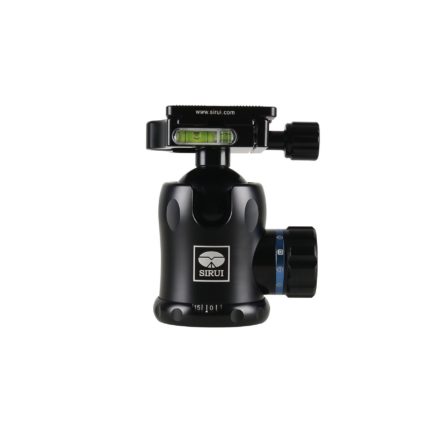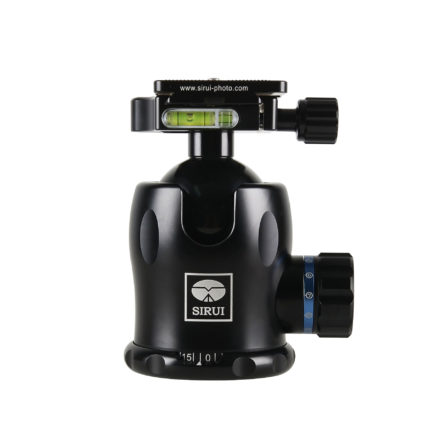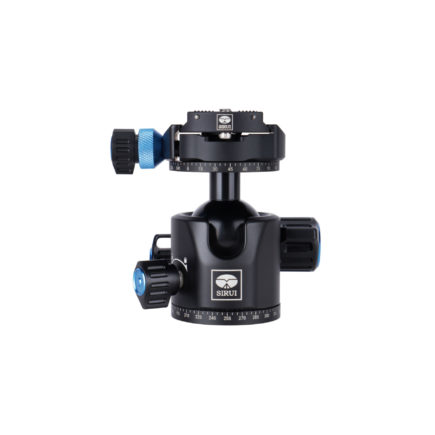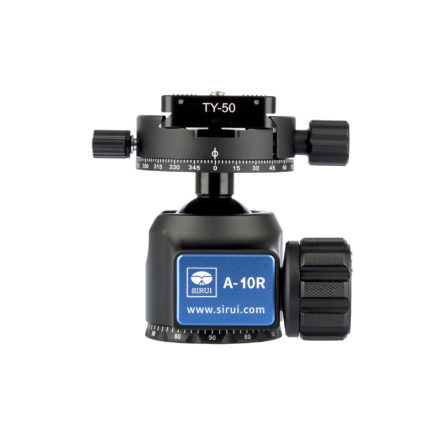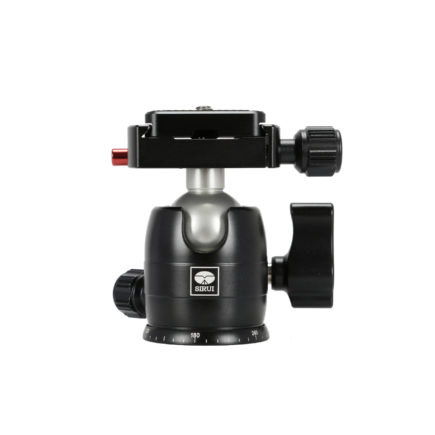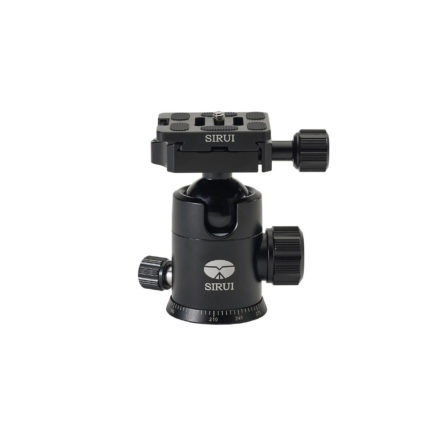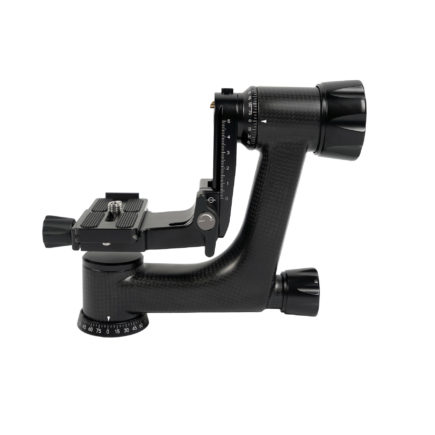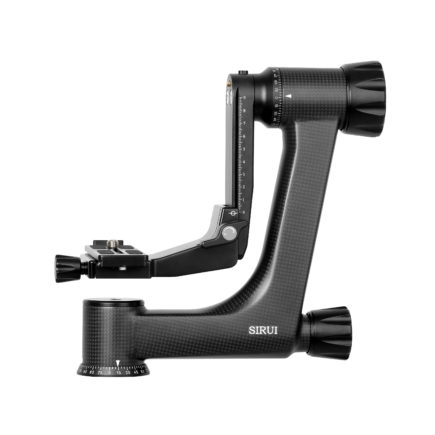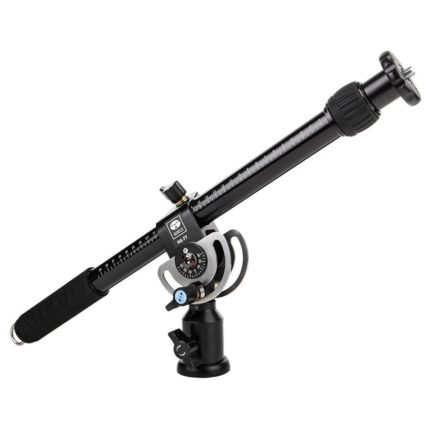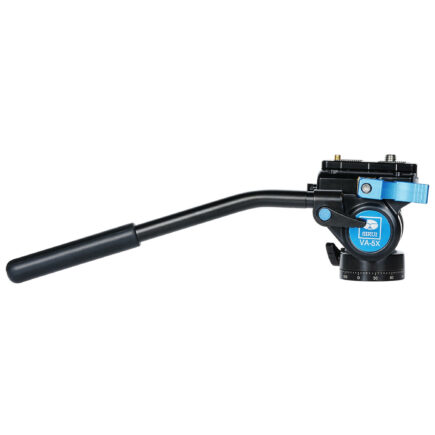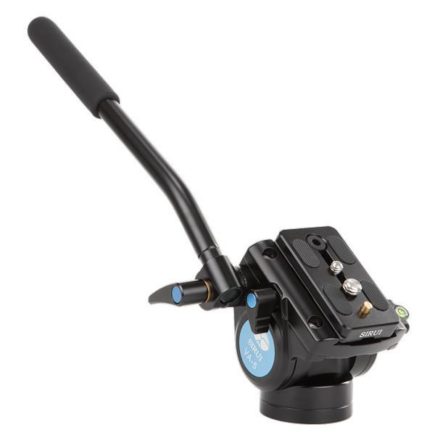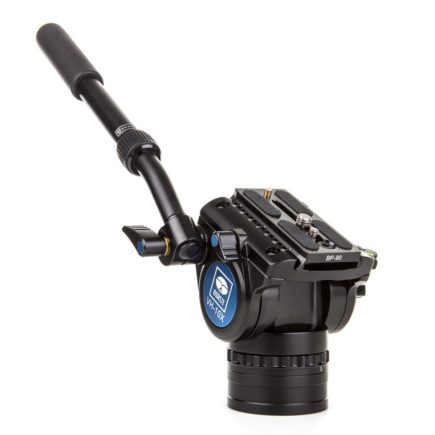The choice of a Sirui tripod head depends on your specific needs and the type of photography or videography you intend to do. Sirui offers a range of tripod heads, each designed for different purposes and preferences. Here are some popular types of Sirui heads and their common uses:
Ball Head
A ball head is a type of camera tripod head designed to provide versatile and smooth movement for adjusting the orientation of a camera. Its primary purpose is to allow photographers to easily adjust the angle and position of the camera while it's mounted on a tripod, enabling precise composition and framing of shots. The name "ball head" comes from the fact that it consists of a ball-shaped joint that allows for multidirectional movement. The ball head's design enables smooth and fluid movement in multiple directions. Photographers can adjust the camera's tilt, pan, and rotation with ease, making it useful for capturing landscapes, panoramas, architectural shots, and more. Ball heads often feature a single locking knob or lever that secures the camera in place. This makes it easy to quickly adjust the camera's position and framing, which is particularly useful for capturing subjects that may be moving or changing quickly. A ball head serves as a versatile and adjustable platform for a camera on a tripod. It enables photographers to swiftly and smoothly reposition the camera in various angles, allowing for quick and precise composition of shots. This flexibility is invaluable in dynamic shooting situations, making ball heads a popular choice for photographers seeking ease of use and adaptability in their equipment.
Photographers who benefit most from using a Ball Head are those seeking versatility and quick adjustments in their shots. Landscape and travel photographers, for instance, find ball heads essential for capturing dynamic scenes and adjusting swiftly to changing environments. Street photographers rely on their speed and flexibility for spontaneous compositions. Casual photographers appreciate the user-friendly design, while wildlife photographers value the ability to reposition rapidly for dynamic subjects. Overall, anyone who values adaptability and ease of use in their photography would be well-suited to a ball head.
Video Head
The purpose of a video fluid head is to provide smooth and controlled movement for video cameras during filming. It allows camera operators to pan and tilt the camera in a seamless and steady manner, resulting in professional-looking footage. Video fluid heads offer precise control over camera movements, support the weight of cameras and accessories, provide stability, enable cinematic effects, reduce operator fatigue, and cater to various camera setups, making them essential tools for high-quality video production. A video fluid head on a tripod is most commonly used in photography genres that involve dynamic camera movements and the need for smooth, controlled shots.
Video heads are specifically designed for videographers and filmmakers. They provide smooth, controlled movements in pan and tilt motions, crucial for creating professional-looking video footage. Documentary filmmakers find them indispensable for capturing dynamic scenes with steady tracking and panning. Commercial videographers rely on video heads to achieve polished, high-quality visuals in advertisements and promotional videos. Wedding videographers use them to ensure steady, fluid motion while capturing memorable moments. YouTube content creators and Vloggers would also benefit from video heads for seamless transitions and controlled motion in their videos. In summary, videographers across various industries and genres, where smooth, controlled motion is essential, are best suited for using a video head.
Tilt Head
A tilt head is an accessory for a monopod or tripod that allows you to tilt your camera or other mounted equipment up and down without having to adjust the leg of the monopod itself. It is a type of head that typically has a single axis of movement (tilting) instead of multiple axes like pan and tilt. Tilt heads are particularly useful for photographers and videographers who use monopods for additional stability but still want some flexibility in adjusting the camera's angle, especially when shooting in vertical (portrait) or horizontal (landscape) orientations. The tilt head lets the user quickly and smoothly adjust the tilt angle while keeping the camera elevated and steady on the monopod.
A tilt head, is best suited for photographers who use a monopod for added stability however want or need more control over the tilt of the camera and lens. Sports photographers and wildlife photographers are some examples of who might use and benefit from a tilt head.
Gimbal Head
Gimbal heads are primarily used for heavy telephoto lenses and wildlife photography. They provide balanced and stable support, allowing you to smoothly track moving subjects, such as birds or animals. A gimbal head is a specialized tripod head used in photography for larger and heavier camera setups, like those used in wildlife or sports photography. Its main purpose is to enable smooth and stable movement while tracking fast-moving subjects. Gimbal heads provide fluid movement along multiple axes, allowing photographers to pan, tilt, and roll the camera smoothly. They are especially useful for balancing heavy telephoto lenses and camera bodies, distributing weight evenly and reducing physical strain on the photographer. The precision of gimbal heads is essential for capturing sharp images with long focal lengths. They also make it easier to capture panoramic shots and seamlessly switch between vertical and horizontal compositions. Gimbal heads contribute to stability, crucial for preventing camera shake during slow shutter speeds or high-magnification shots.
A gimbal head is specifically tailored for photographers dealing with heavy camera and lens setups, particularly in wildlife and sports photography. It excels in providing stability and fluid tracking, essential when capturing fast-moving subjects. Wildlife photographers tracking animals or birds in flight find gimbal heads indispensable for maintaining precise framing. Sports photographers shooting action sequences benefit from the smooth, controlled movements that a gimbal head offers. Overall, photographers in dynamic environments requiring stability and precision with hefty equipment are best suited for using a gimbal head.
4 Way Head
Three-way heads offer independent control over three axes: pan, tilt, and roll. A 4-way tripod head is a type of tripod head designed to provide photographers with a high degree of control over the positioning and orientation of their camera. It offers four different types of movements: pan, tilt, roll, and lateral shift. The purpose of a 4-way tripod head in photography is to offer precise adjustments for composition, framing, and alignment in various shooting scenarios. A 4-way head allows photographers to finely adjust the camera's position in both horizontal and vertical directions. This precision is crucial in situations where accurate composition is vital, such as architectural photography, where lines and perspectives need to be aligned perfectly. The 4-way head's design often provides a high level of stability, making it suitable for situations where the camera needs to remain steady, such as long exposure shots or when working with heavy equipment. The ability to pan the camera horizontally is valuable for capturing panoramic images. A 4-way head enables photographers to create seamless panoramic shots by rotating the camera smoothly around its horizontal axis. Tilt adjustments allow photographers to change the camera's vertical angle, helping to frame subjects at different heights or to adjust the composition for different creative effects. The roll adjustment in a 4-way head helps level the camera, ensuring that the horizon line is straight and eliminating the need for post-processing adjustments to fix tilted horizons.
A 4-way head is most suitable for photographers who require precise control over multiple axes of movement. This type of head is particularly beneficial for studio photographers and architectural photographers who need meticulous adjustments in various directions. It allows for accurate framing, making it an excellent choice for capturing intricate details or achieving specific compositional requirements. Additionally, product photographers may find a 4-way head useful for achieving precise angles and perspectives. In summary, photographers engaged in controlled studio settings or architectural photography, where precision in multiple directions is paramount, are best suited for using a 4-way head.
When choosing a Sirui tripod head, consider factors such as the type of photography or videography you'll be doing, the weight and size of your equipment, and your personal preferences for ease of use and control. Make sure to also check the load capacity of the head to ensure it can support your camera and lens combination.
AVAILABLE ON BACKORDER
AVAILABLE ON BACKORDER
AVAILABLE ON BACKORDER
AVAILABLE ON BACKORDER
AVAILABLE ON BACKORDER
